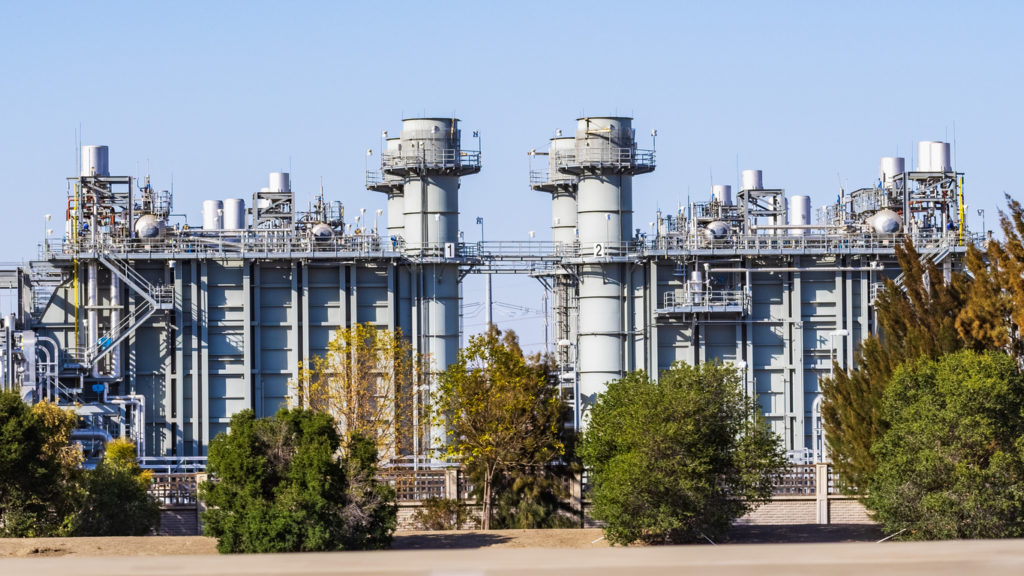
An analysis published in Chemical Engineering Progress describes the feasibility of an underused yet more environmentally friendly method for capturing carbon from natural gas. The study was part of a senior design project by spring graduates Eric Kennedy, Sarron Metew, and Raghav Chaturvedi while working under the supervision of professors Warren Seider, Leonard Fabiano, and Bruce M. Vrana.
Natural gas, which consists primarily of methane, is currently the largest source of energy in the United States. But, because methane is also a greenhouse gas and releases carbon dioxide when burned, there is growing interest in finding ways to use natural gas for energy without increasing carbon emissions.
Currently, the majority of natural gas-generating power plants are combined cycle plants, where air and natural gas undergo a series of compressions and combustions that convert the heat created through burning into electricity. The exhaust, which contains carbon dioxide, is then vented to the atmosphere.
While significantly more expensive, there is growing interest to develop plants with post-combustion carbon dioxide removal, where the exhaust, or flue gas, is “scrubbed” chemically to capture the carbon dioxide. This process has been demonstrated at a large scale on coal-fired power plants but not for natural gas, where the flue gas carbon dioxide concentration is more dilute. However, it is economically and thermodynamically expensive due to the low carbon dioxide concentrations and is only 90% effective at capturing carbon.
An alternative method is the Allam cycle, where methane is pressurized and burned with pure oxygen and a recycled supercritical carbon dioxide stream in a way that allows carbon dioxide to be separated and sequestered without scrubbing. While the required investment, such as purchasing different types of equipment, means that the Allam cycle has a higher initial cost, the process results in reduced carbon emissions compared to combined cycle plants and is 99% effective at capturing carbon.
The specific question addressed by Kennedy, Metew, and Chaturvedi for their senior design project was whether the Allam cycle could be feasible in larger-scale electrical power plants, as the method had previously been developed for use in smaller plants. To do this, they first created models of the types of power plants and ran simulations of each of the chemical reactions and separations that took place. Next, they completed a full economic analysis of equipment costs, operating expenses, and energy output; this allowed them to determine and compare the profitability measures between the Allam cycle, combined cycle, and combined cycle with post-combustion carbon dioxide removal plants.
One of the main challenges in this analysis was simulating the Allam cycle, which Kennedy explains has more variables and is more complicated than the industry standard method; there is also less documentation about the Allam cycle that they were able to reference when developing their models. “There are a lot of dependent variables, and finding the trade-off between the energy and economic costs after the power is produced is not as set in stone as it looks in the general diagram,” Kennedy says.
The authors found that while the Allam cycle did not have a profitability advantage in smaller plants (ones that generated 50 megawatts of power), increased tax credits could improve the profitability of larger plants (300 megawatts) that used the Allam cycle. The authors specifically looked at 45Q, a tax credit for power generation companies for each sequestered megaton of carbon dioxide and found that increasing this credit made the Allam cycle more profitable.
Because the Allam cycle is able to capture more carbon compared to the industry standard combined cycle with post-combustion removal, the authors suggest that increased carbon capture tax credits could support the continued use of natural gas without releasing more carbon dioxide into the environment. “Given the large infrastructure of natural gas pipelines, the Allam cycle could be a solution to work with that infrastructure if the appropriate incentives are in place,” says Kennedy.
This study is a first step toward documenting the benefits of the Allam cycle and starting a conversation on the possible economic incentives that could support it, the authors say, adding that future analyses should take into consideration renewable energy sources, such as solar or wind energy, and comparing their costs and benefits at similar power levels.
Seider says that the idea for the project is thanks to program alumni and colleagues who collaborate with the Department of Chemical and Biomolecular Engineering on senior design ideas. “We’re fortunate that there’s a lot of chemical industry in the Philadelphia area. Many of our students go to work with these companies and suggest problems for students to work on that will be timely and of interest, like the Allam cycle, and they give them advice along the way,” Seider says.
